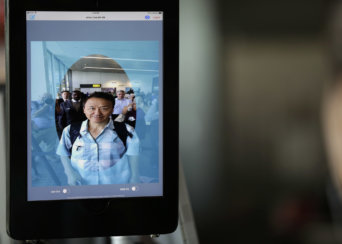- About
- Topics
- Picks
- Audio
- Story
- In-Depth
- Opinion
- News
- Donate
- Signup for our newsletterOur Editors' Best Picks.Send
Read, Debate: Engage.
| topic: | Technology |
|---|---|
| located: | USA |
| editor: | Yair Oded |
A recent report by the Washington Post reveals that Immigration and Customs Enforcement (ICE) has been sifting through states’ driver’s license databases, using facial recognition technology in order to track down and deport undocumented immigrants who legally obtained state-issued IDs. By mining state databases, ICE does not only overstep its legal authority but also violates residents’ privacy rights and exacerbates its bullying of migrant communities.
Despite the absence of laws granting federal agencies free access to states’ information, ICE has been utilising an old legal loophole in order to sift through driver’s licenses in states where undocumented immigrants are permitted to obtain state-issued identification. This appears to be the case in at least three such states – Washington, Utah, and Vermont. In Utah, ICE’s prying into state databases was executed in blunt defiance of the state legislature’s policy, which explicitly prohibits the sharing of ID information with federal agencies.
In an interview for NPR, Alvaro Bedoya, the founding director of Georgetown Law's Center on Privacy & Technology and the person whose team initiated the investigation into the matter, stated “What happens is that ICE takes advantage of a two-decade-old law that says that in general, DMV should cooperate with law enforcement. And this law was written before face recognition existed. ICE uses it to ask that the DMVs comply. And the DMVs do so – usually in secret and without telling the people in the state.”
Bedoya further stresses that undocumented immigrants are not the only ones who should be alarmed by this practice, for ICE could potentially target any person they believe to fit the profile of the undocumented immigrant they’re after. Seeing as facial recognition technology has been rightly criticised for rendering imprecise and racially biased results, it can be expected that members of ethnic minorities and women would be placed under greater risk of being flagged by ICE, regardless of their actual immigration status.
"I think it's really important for folks to realise that even if you're not undocumented it does affect you, because the software is biased and doesn't really protect or find people of colour, women or young people really well. The question isn't whether you're undocumented – but rather whether a flawed algorithm thinks you look like someone who's undocumented," Bedoya told NPR.
ICE is not the only federal agency which employs facial recognition technology in order to monitor the population. Agencies such as the Federal Bureau of Investigation (FBI) and Customs and Border Protection have also been employing such techniques in their work.
Thus far, there appears to be bipartisan concern over ICE’s usage of facial recognition technology to track down migrants and rummage through state databases. It remains to be seen, however, whether lawmakers from both sides of the aisle will agree on what the best course of action would be in order to hold ICE accountable, protect states' databases, and regulate the usage of facial recognition technology.
Beyond lawmakers themselves, it is important that people recognise the urgency in reining in this highly-invasive and potentially-oppressive technology and ensuring that government agencies are restricted in their ability to utilise technology for surveillance purposes. Migrants and minorities are naturally the first ones to be targeted, but rest assured that once such mechanisms spiral out of control – no person would be immune to their sting.
Image U.S. Customs and Border Protection
